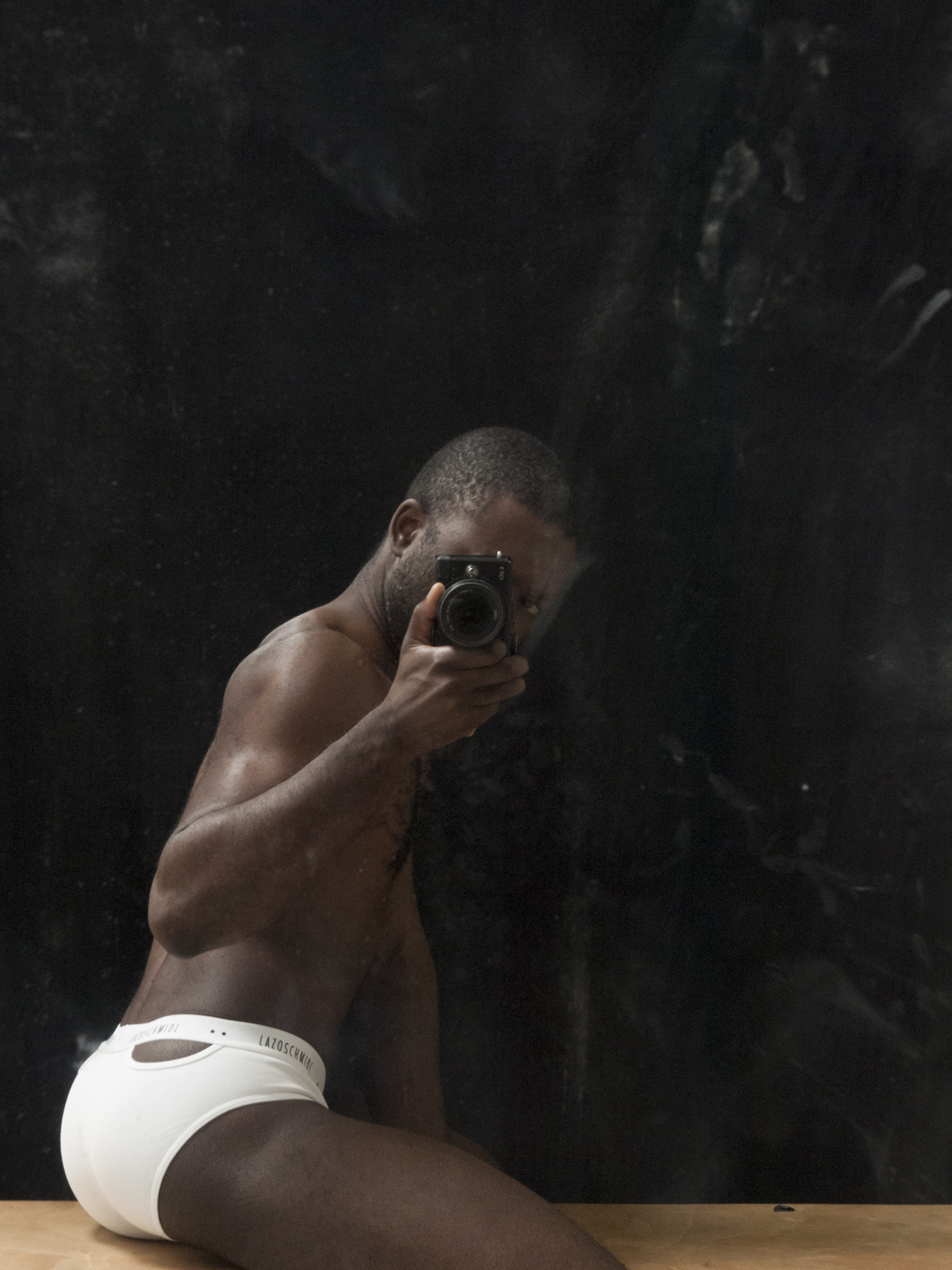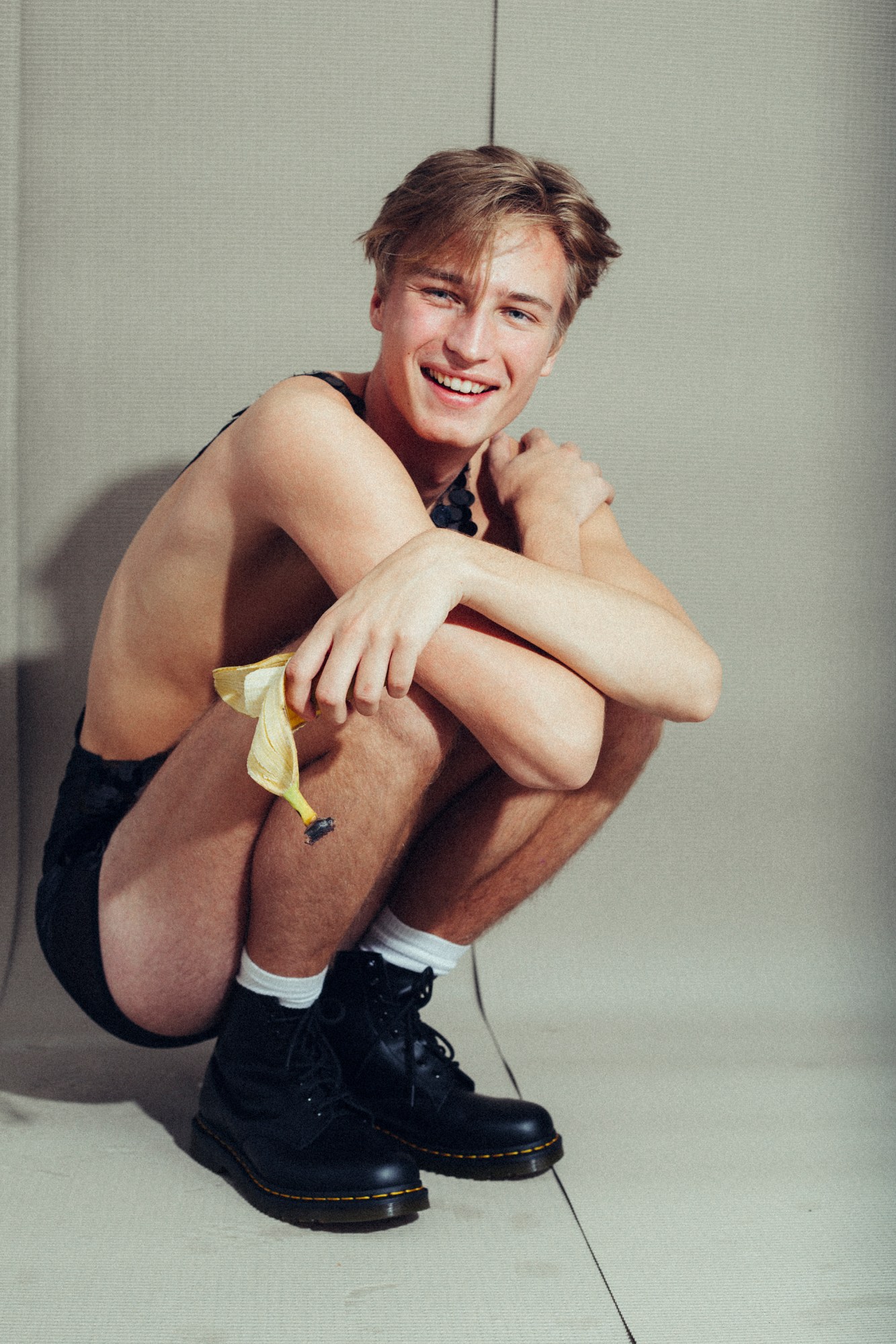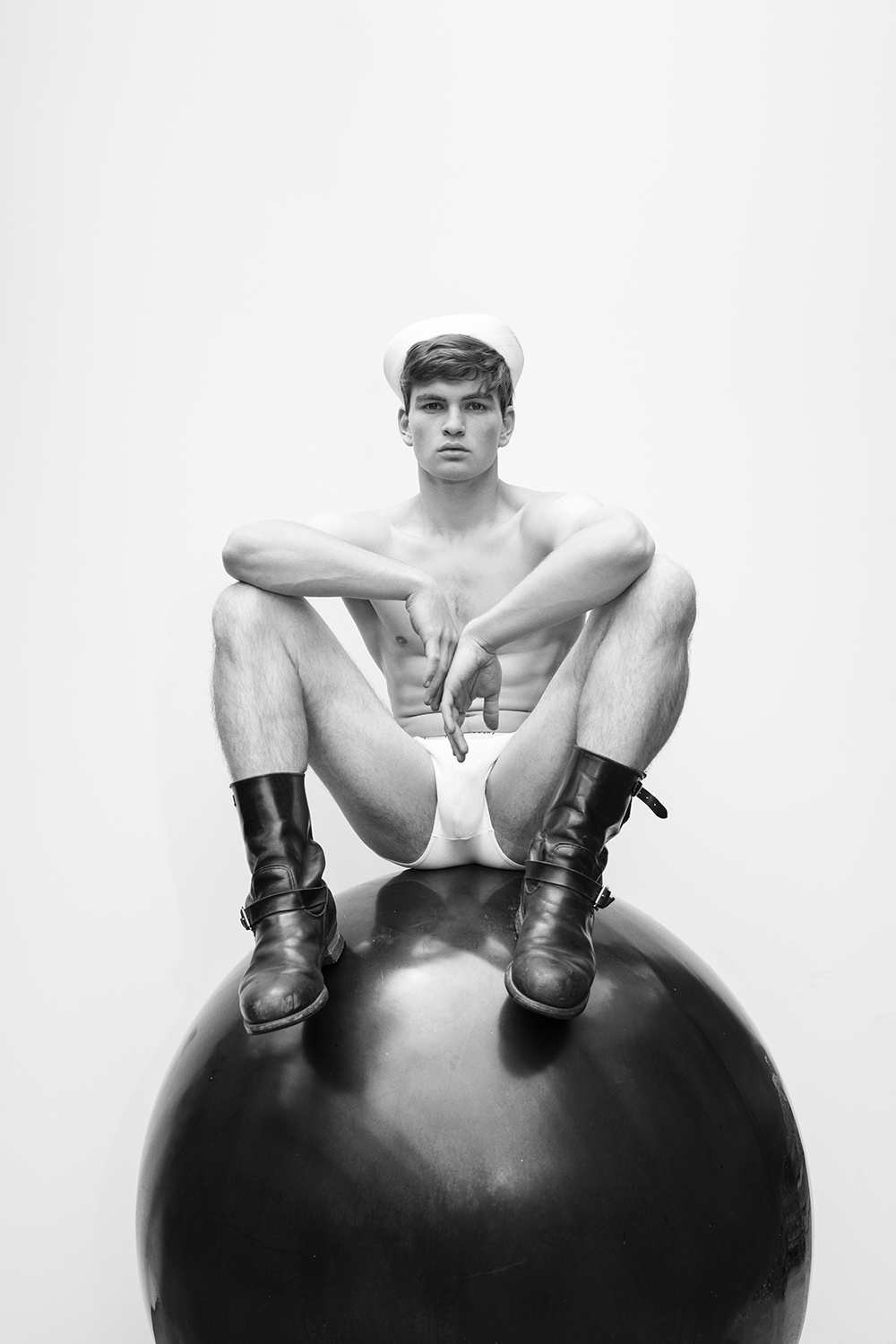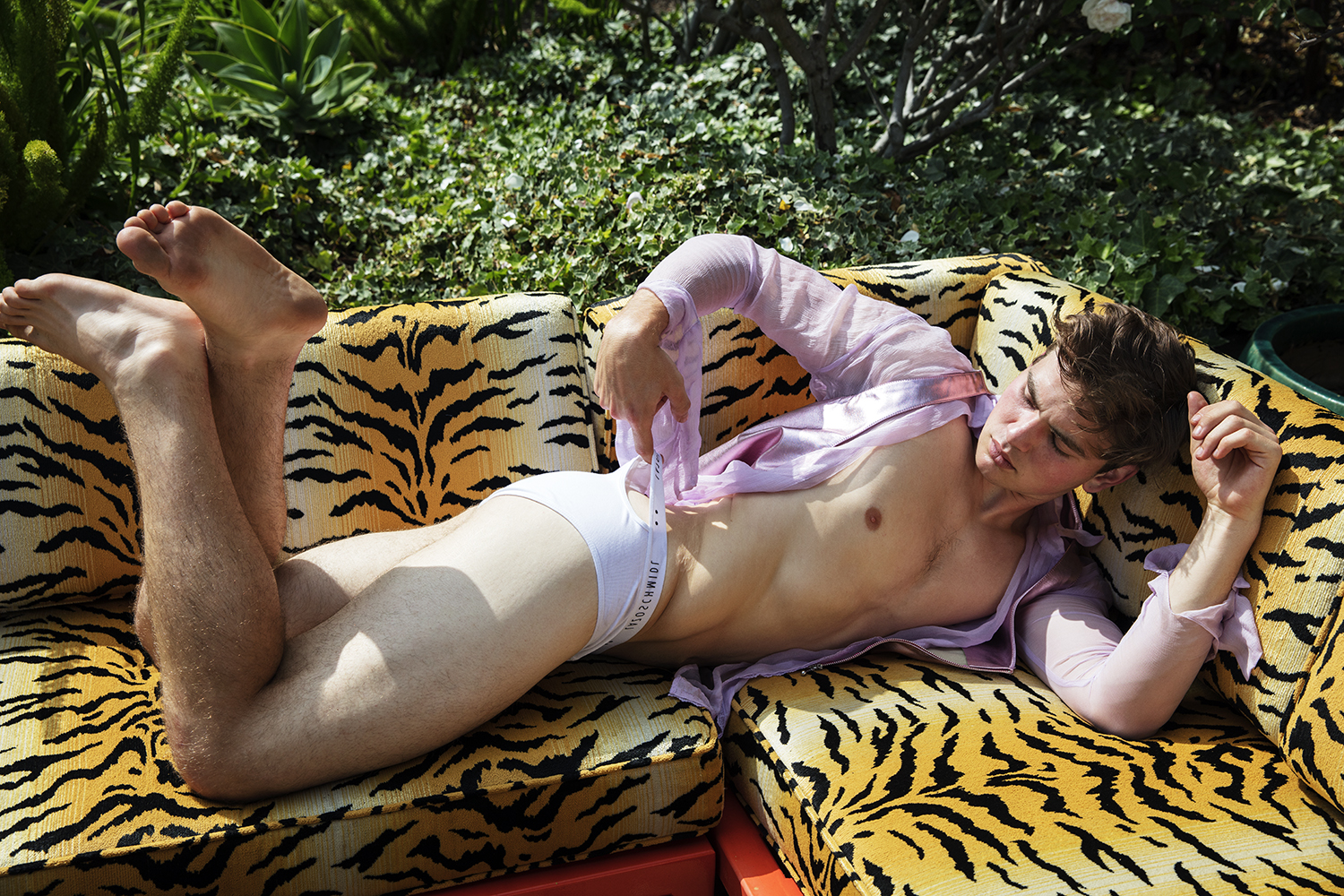In August, i-D got a preview of Lazoschmidl’s colorful lurex knitwear, sheer printed blouses and sequined bodysuits, which debuted at Stockholm fashion week for SS19. The collection, which will hit Opening Ceremony in February, has now been artfully displayed in a fanzine. Designers Joseph Lazo and Andreas Schmidl have been creating fanzines since they released their first collection in 2015. “I just have this addiction to print,” says Schmidl.
Unlike prior zines, which contained 30-50 pages shot by a single photographer, this one is bigger and more diversified. It contains 84 pages of styled looks, self portraits, romanticized text and colorful drawings of men. Lazo and Schmidl worked with six different creatives, which gave the zine a personalized, eclectic feel. According to Schmidl, all of the people involved were self-motivated and genuinely interested in the project. “It’s not about the profit, it’s about the brand,” he said.

The zine starts with a series of sailor-themed photos of models in Lazoschmidl’s underwear, sailor hats and combat boots, shot by portrait photographer Doug Inglish. Next are several 90s-themed black and white photos of gay men shot by Canadian artist Bruce LaBruce, followed by selfies of photographer and artist Paul Sepuya in Lazoschmidl briefs posing with a tripod. Sepuya played a minor role in several other Lazoschmidl zines, but this issue, he got to create his own feature.
“It was very important that the photos were fun and sexy but not sexual,” Schmidl says.
The second half of the zine showcases Lazoschmidl clothing in a way that’s tastefully revealing. Next is the shoot by French photographer and stylist Alexandre Chagnon, in which model Madis Kiuk poses in sequined, chiffon and knit pieces from the spring collection (also the preview that i-D published in August). Then, some art comes into the mix. London-based artist Max Marsden provided brightly colored drawings of male figures surrounded by natural elements like flowers and grass. The whimsical portraits resemble a marriage of Hockney and Van Gogh’s aesthetics.

Sweden-based photographer Jasmin Storch was the biggest contributor, covering 30 of the zine’s pages with Lazoschmidl looks sported by model William Hagg. Hagg wears small props like headpieces made of teddy bears and newspaper, but overall the shoot had a minimalistic vibe.
The designers met Storch at a party in 2015, and the three immediately decided they’d work together in the future. Schmidl and Lazo never enter a shoot with a set concept, and this one was no exception. The designers essentially gave Storch complete creative freedom. “I was shocked that they let me decide so much,” Storch said. “When they saw how I worked, they actually took a step back. It was a very fluid collaboration.” The photos came out with a grainy finish, a style that Jasmine says often happens by accident. But Lazo and Schmidl loved it, and felt that it gave their colorful clothing nostalgic vibe.“First we wanted it to be a bit more flashy, a bit more pop,” Schmidl said. “But then when we developed it, we felt it was more warm and intimate to have that grainy aspect.”
Lazo and Schmidl have only produced 100 zines, and are selling them on their Tictail shop for just 14 euros. They put little money into the project, and each photo shoot only took a few hours. “You don’t have the means but you still want to bring out the message, the concept, the imagery,” Schmidl said. The ‘waste not, want not’ mentality rings true to the Lazoschmidl brand — the garments are made-to-measure and sold in limited quantities. “I don’t want to produce more than I know is going to find a home,” Schmidl says.

Lazo and Schmidl see each zine as a platform for collaboration and experimentation with creatives, and don’t plan on stopping them any time soon. Schmidl wants to make a zine entirely of the different Lazoschmidl boys, giving the models a platform to help propel their careers. It’s refreshing to see a fashion company that values its collaborators as much as its brand. “For us, it’s always kind of important to take someone who’s not known, but you can see they’re going somewhere,” Schmidl says. The collaborators of this zine helped make a unique work that is sure to sell out.
Though the zine is comprised of various works by various creators, it still maintains a consistent theme: handsome, youthful men sport revealing clothing in an artful way, thanks to smartly chosen styling and careful creative direction. “It’s about people and it’s about art, and the struggle about going through life,” says Storch, noting she’s humbled and proud to be part of the project. “I always like how they have different life experiences, then the clothing changes,” Schmidl adds. “In the end it’s a story.”

